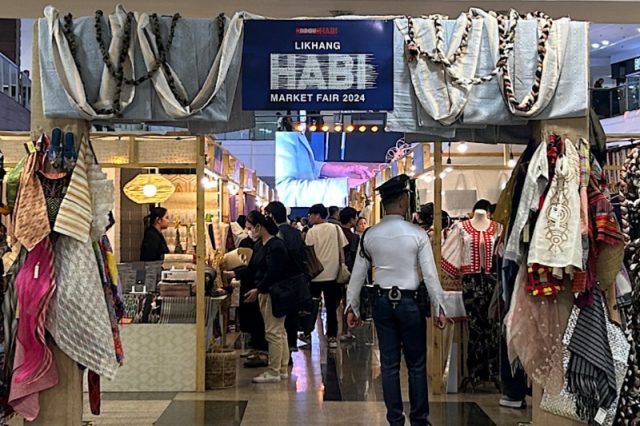Displayed weaving crafts tinted with dyes in a weaving fair promoted the use of natural dyes and raised awareness of sustainability.
Mia Villanueva, the Habi Textile Council president, said that this year’s Likhang Habi Fair showcased several weaving products that use natural dyes in their crafts.
“Everywhere in the world, people are talking about natural dyes. We want to put it in people’s minds. This is where we should start moving towards,” Villanueva said.
The Philippine Textile Council organized the Likhang Habi Market Fair 2024 from October 18 to 20 at the Glorietta Activity Center.
This year’s theme, “Earth to Loom: Celebrating Natural Dyes in Philippine Textiles,” centered on raising awareness and promoting the use of natural dyes in fabrics.
Aside from the booths showcasing the weaving craft from various regions in the country, the organization also held the 7th Lourdes Montinola Piña Weaving Competition and the 4th Eloisa Hizon Gomez Abaca Weaving Competition. Ten weavers were recognized for their crafts.
The piña weaving was named after Lourdes Montinola, chair emeritus of the Far Eastern University and author of several books emphasizing the pineapple cloth as a national treasure.
Seven weavers received awards in the piña weaving contest, which aimed to strengthen the piña cloth production while advocating for creativity.
Edgar Cornito claimed the top spot with his piece “Piña Silk, Black, and Gold Sinuksok.”
He was followed by Raquel Eliserio, who also won last year, for her “Rosas de Paper with Rengue” work.
“Piña Silk Kalabsa” by Rosalvie Tumaca and “Piña Silk Multi-Harness Geometric Pattern” by Perlie Florencio both placed third.
For the special awards, Jannalyn Rasonable, 24, garnered the Nadres Young Weaver Award with “Frame of Philippine.”
Ursulita Dela Cruz and Therese Angela Sulañgi bagged the Filip + Inna Innovation Award for their “Ugnayan” (Mixed Media Piña-Seda).
The 27 entries were evaluated by the quality of making, such as the knotting of the fiber and the use of dyes or other forms of coloring, and the creativity of the artists.
Meanwhile, the organization recognized three winners for the abaca weaving competition.
The abaca weaving contest was named after Eloisa Hizon Gomez, a Kapampangan advocate of wearing native attire and using local textiles. It was initiated by designer-turned-monk Dom Martin Gomez, OBS, as a tribute to her mother.
Rolly Arboleda received awards for the excellence of the execution and technique in the “Abaca Fino Barong” and “Abaca Fino Plain” works.
Arlene Yamog & Mayra Iledan also obtained an award in the competition for their “Abaca Macramé” piece.
The 12 entries were judged using the same criteria as in the piña weaving contest.
The Philippine Textile Council preserves and promotes Philippine textiles by holding the annual Likhang Habi Fair Market and competitions and providing assistance, like sourcing tools, to the local weavers.




